When you send the right email to the right person at the right time, your subscriber opens, clicks, and makes a purchase.
It doesn't feel like marketing to your recipient when your email is targeted.
In today’s post, I’m going to show you how to get responses like that using targeted email marketing techniques.
%(tableofcontents)
Let’s dive in.
What's Targeted Email Marketing?
Targeted email marketing is the practice of sending marketing emails to specific sets of your subscribers, using list segmentation.
The task may sound daunting, but with the help of some advanced email marketing tools, almost every small business can send highly targeted emails automatically to develop better relationships and generate more sales.
Why Send Well-Targeted Emails?
There are always upsides in optimizing marketing communication with your customers. At a high level, sending well-targeted emails improves what’s known as the 5Rs of email marketing:
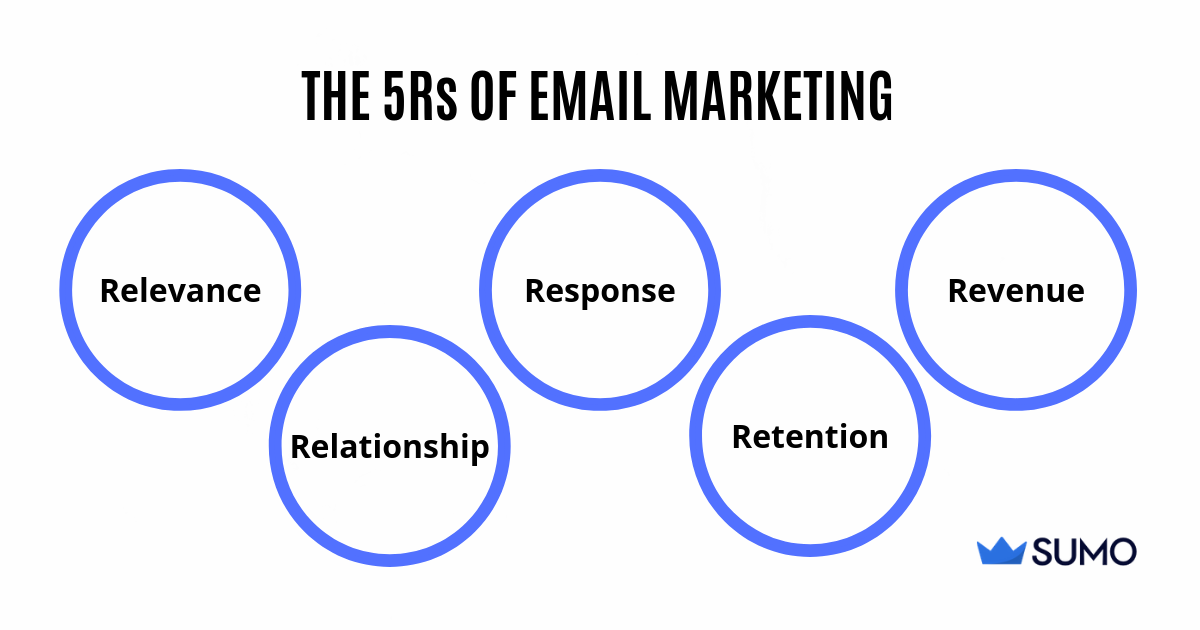
-
Relevance. Instead of sending every customer the same newsletter or promotion, you only send emails that are highly relevant to a specific set of customers.
-
Response. With these targeted emails, your customers are more likely to interact with your brand, whether it’s to fill out a survey, share your newly launched promotion, or purchase your products.
-
Revenue. By sending custom promotions and offers to a tailored set of your audience, you can boost your conversions and close more sales in the process.
-
Relationship. A well-targeted email makes your customers feel like you’re writing personally to them and that shows your customers you care about them.
-
Retention. Targeted emails can also be used in your retention campaigns — from getting subscribers to stay on your list to winning back customers who abandoned their cart.
The next question is: how do you get started with targeted email marketing?
Setting Up To Send Your First Targeted Email
Before you can send a well-targeted email to your subscribers, you need to have the right customer segmentation in place. Here are three simple steps to get started:
1. Niche Down Your Target Audience
If you’re selling to everyone, you’re selling to no one. In the competitive market today, you need to find the narrowest audience you can serve so your marketing and messages are relevant to them.
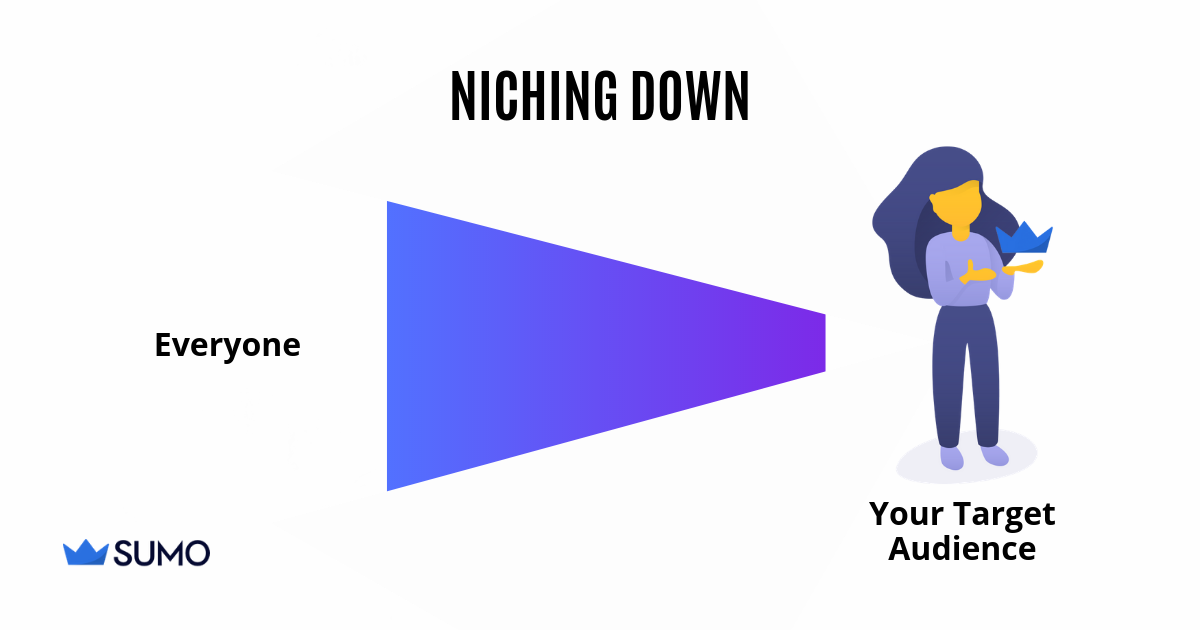
If you don’t have a clearly defined audience yet, develop one now by niching down — even if you don’t want to implement targeted email marketing just yet.
2. Collect The Right Data From Your Subscribers And Customers
The next step is to collect the right data so you can segment your subscribers and customers accordingly.
Aside from email addresses, you can collect other data about your audience:
-
Personal details. Name, address, birth date, contact number.
-
Demographics. Gender, age, location, profession.
-
Psychographics. Interests, buying habits, browsing behaviors, desires, fears.
You can collect this data by asking. For example, HubSpot asks about the topic of interest when a subscriber joins the email list.

As another example, you can collect data like location using the advanced targeting feature in Sumo to show the opt-in form to a specific group of visitors. More on this later.
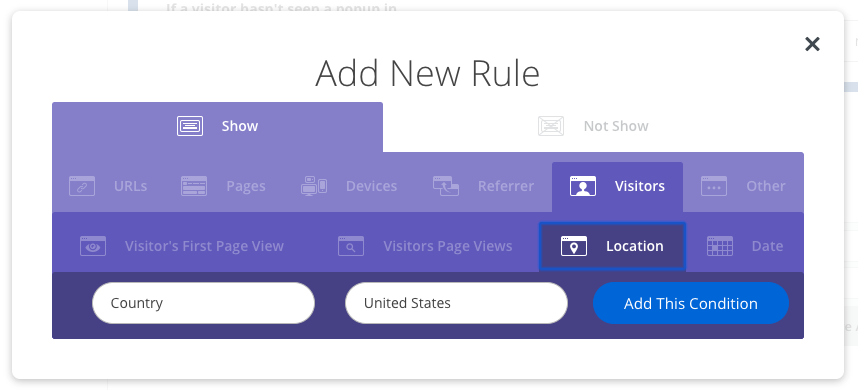
Decide what kind of data you need and move to the next step.
Note: Before you collect any data, make sure you have a privacy policy in place that describes how you collect and use the data. In many cases, you’re responsible to get your subscribers’ consent on how and what you use their data for.
Different countries and regions have different laws. I'm not a lawyer. Please find the laws that apply to your situation.
3. Integrate The Email Tool With Your Ecommerce Platform
Not all email tools integrate with your Shopify store.
You can use any email tool to collect basic data about your subscribers, but using one that integrates well with your store has a few bonuses:
-
No confusing process to stitch your store and the email tool together.
-
Ecommerce-specific features, such as a discount code.
-
Easy to target ecommerce-specific flow, such as the checkout process.
We developed a Shopify app that easily integrates Sumo with your ecommerce store. You can follow the instructions here to install Sumo on your store.
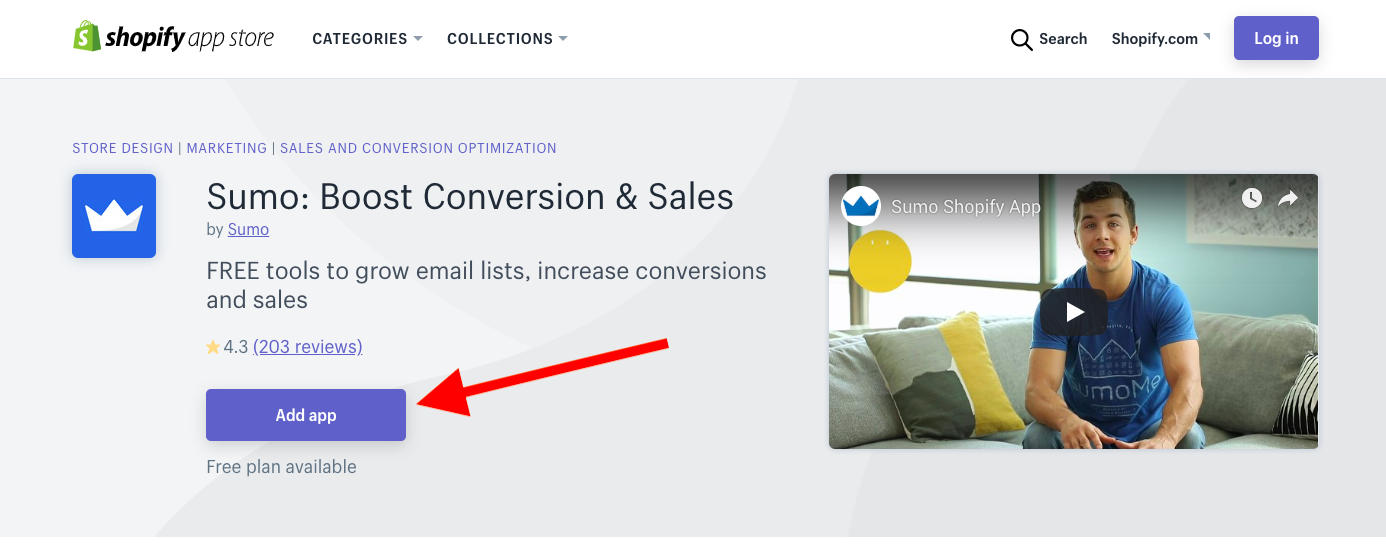
How To Make Your Emails Targeted
Now that you know why targeted emails matter to your business, and you are done setting up the required infrastructure, it’s time to email your subscribers or customers.
Here are the four most popular targeted email campaigns you can send:
1. Targeting By Location
One of the major advantages you have running an ecommerce business is you get to reach anyone from anywhere. However, there are times when you want to send different messages and offers to subscribers in different locations.
For example, you’re launching a new product that is only available to customers in the United States, or you want to offer free shipping to customers of selected countries.
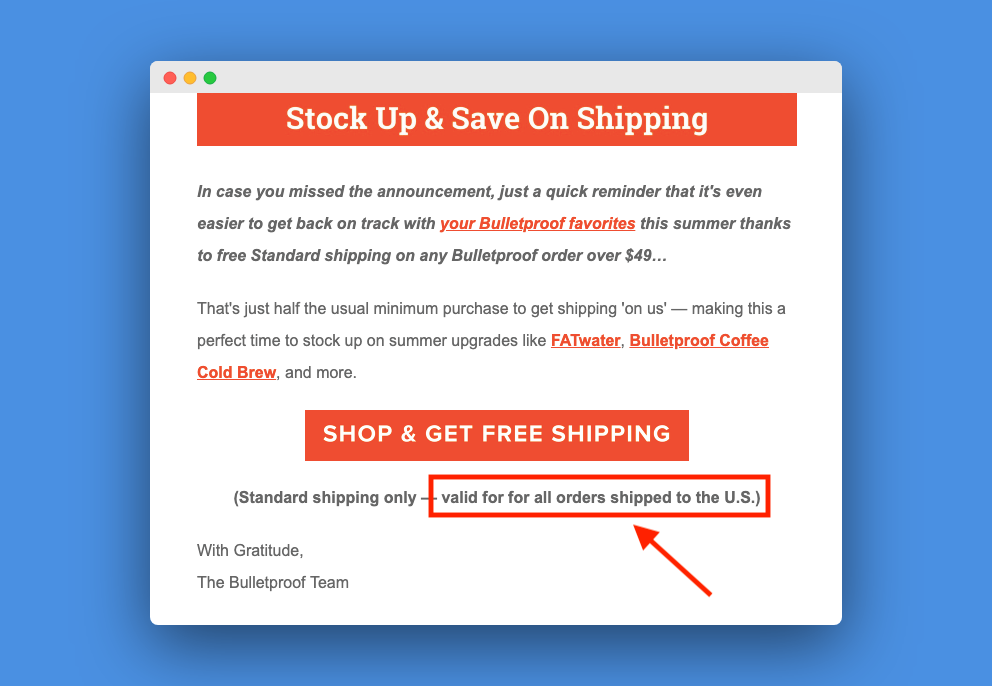
You can do that using Sumo by showing the List Builder based on location and segmenting the subscribers to a specified group.

Then, send a targeted email to subscribers from a specific location by selecting the group you want to reach.
2. Targeting By Customer Type
Pop quiz: Who is more likely to buy from you?
New subscribers who have never bought any of your products?
OR
Paying customers who have been shopping at your store in the past three months?
The answer is obvious.
Your existing customers are more likely to buy from you again because they have already trusted you enough to buy before. Convincing new subscribers to make their first purchase can take more time.
With that, it makes no sense to talk to your general subscribers and your existing customers the same way. To increase your revenue, optimize your emails based on purchase history.

In the example above:
-
Non-buyers get a discount of $10 when they buy 2+ boxes because there is less resistance for them to commit to smaller order size (and by not mentioning the total spending).
-
Buyers get $20 off when they spend more than $100. Since trust was established in previous purchases, they are more comfortable with spending more.
You can take this targeting campaign to the next level by segmenting your customers into different groups based on their lifetime amount spent.
3. Targeting By Gender
To boost the relevancy of your email marketing, target by your customer’s demographics. While there are multiple demographic attributes you can use, targeting by gender is commonly used by many top brands (especially in the clothing and apparel industry).
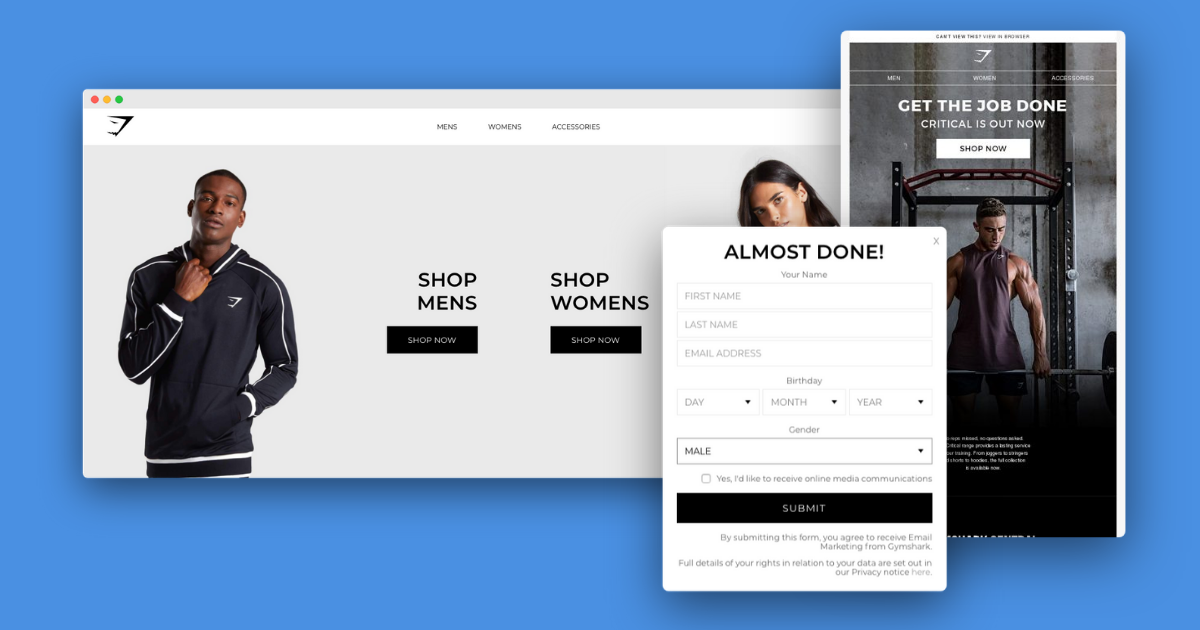
To send gender-targeted emails to your customers, you first need to collect this data. You can do that by adding a custom field in your Sumo form.
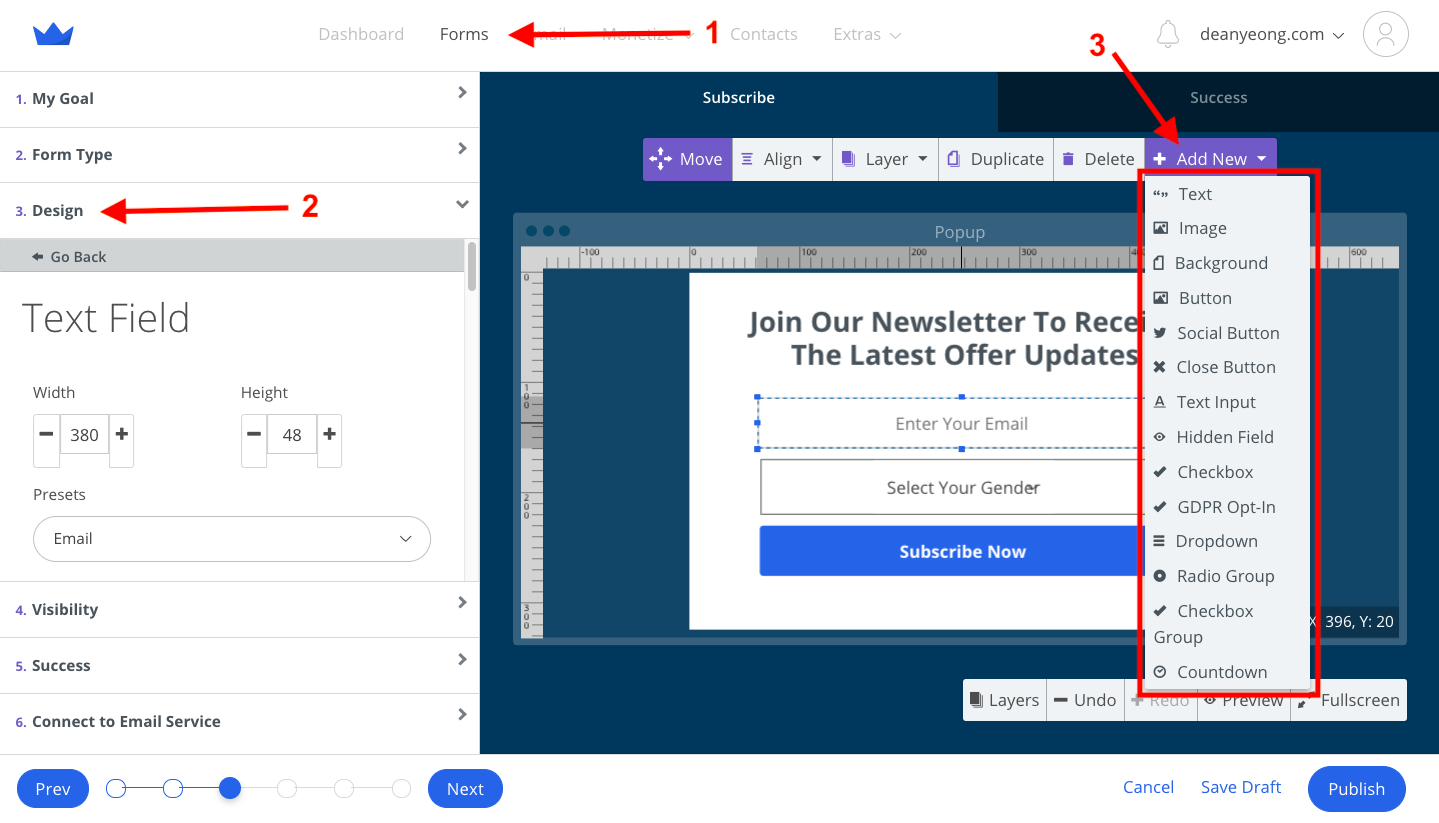
When you send your email, select the gender field, and send based on the gender you want.
Remember: When targeting based on your customer’s demographics, your emails are as good as the customer data you have.
With Sumo, you can create any number of custom fields you want. However, make sure your email service provider has the ability to segment and send emails based on this data.
4. Targeting By Behavior
When you target by behavior, you send emails based on certain actions (or lack of actions).
For example, you can send an email to customers who have abandoned their cart before completing the checkout process.

It’s a win-win situation for you and your customers when you take the customer journey into account in your email marketing.
Here are more examples of how you can implement this type of targeting:
-
Send an email to a one-time customer encouraging them to make a second purchase. See how Rockin’ Wellness did that:
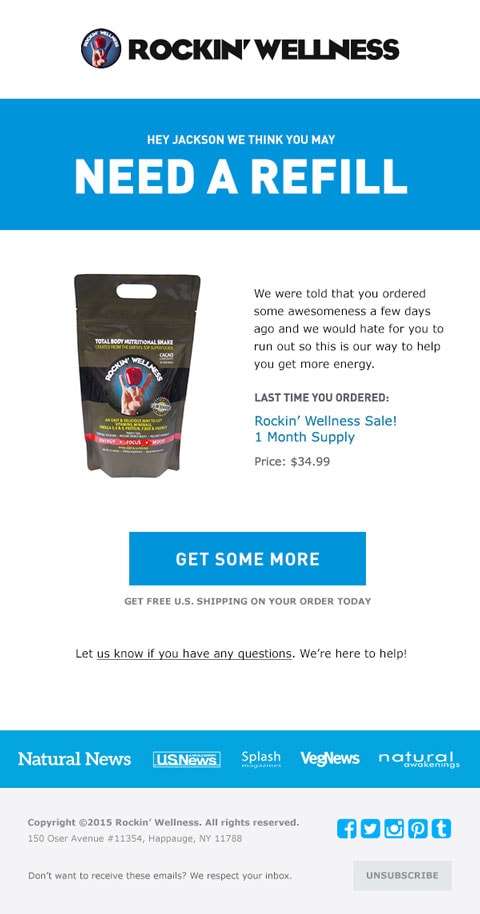
-
Send a promotional email about related products (upsells or cross-sells) to customers who bought a specific product. Here’s an example of how of Dollar Shave Club promotes upsells on top of their regular subscriptions:
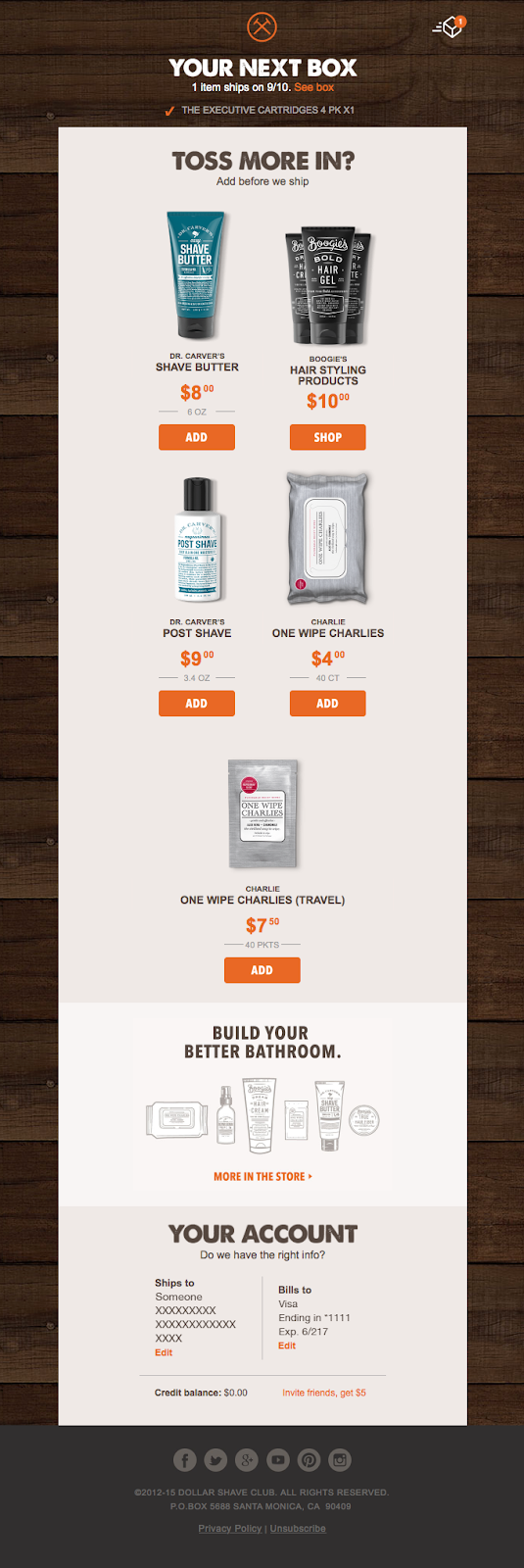
-
Send a reactivation email to subscribers who haven’t clicked any link in your newsletter in the past 90 days. See how Jack Wills did it:

Get Personal With Your Email Marketing
Well-targeted emails give your marketing a personal touch and are proven to increase engagement and revenue.
With Sumo, collecting and segmenting customer data is simpler than ever.
To get started, I’ve curated 10 targeted email examples from successful brands and businesses like Target, Runtastic, Casper, and more.
Use them for inspiration and email ideas.
Add A Comment
VIEW THE COMMENTS